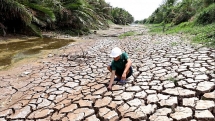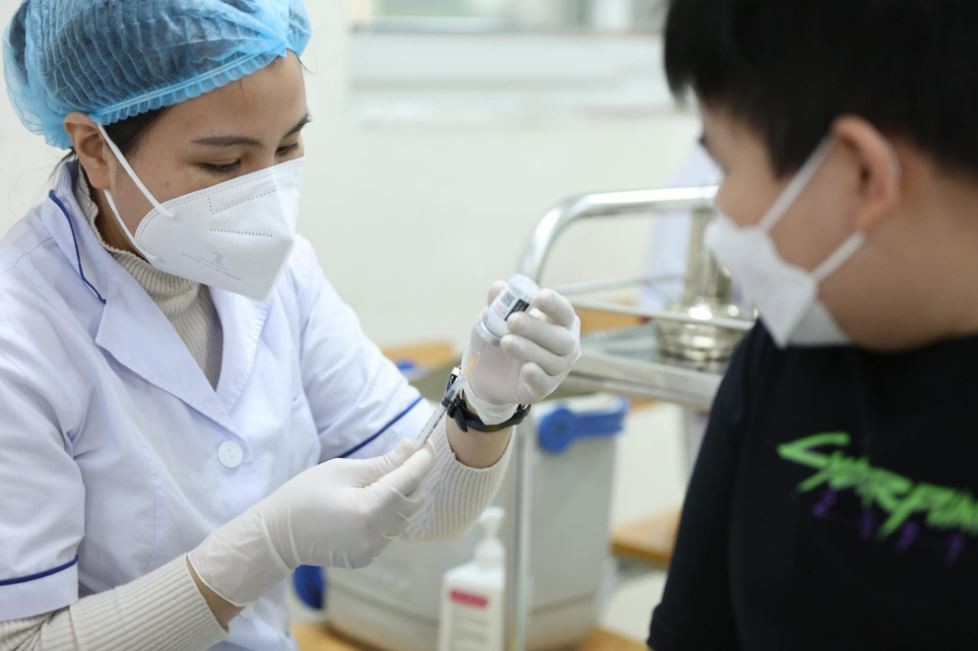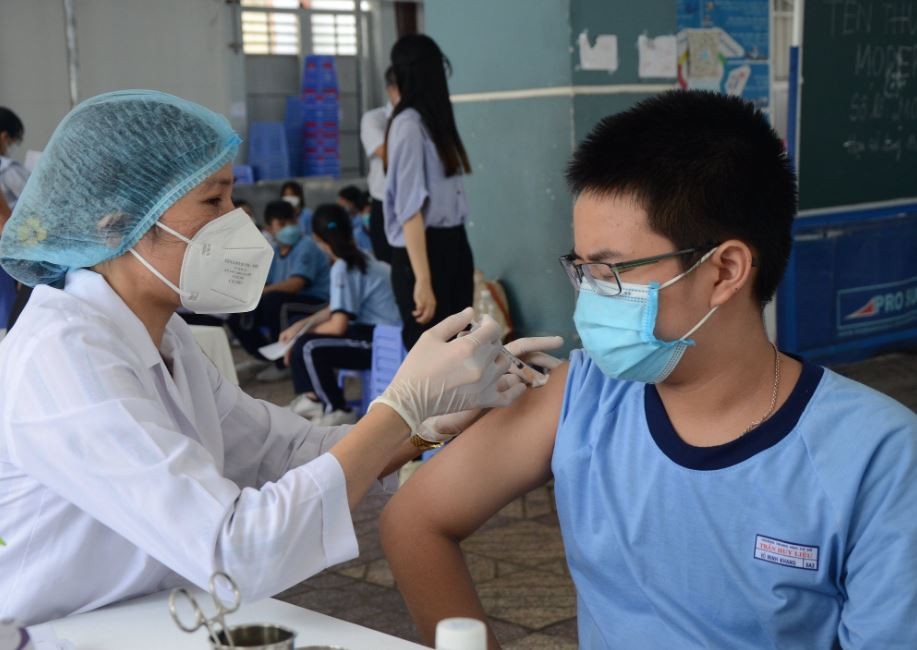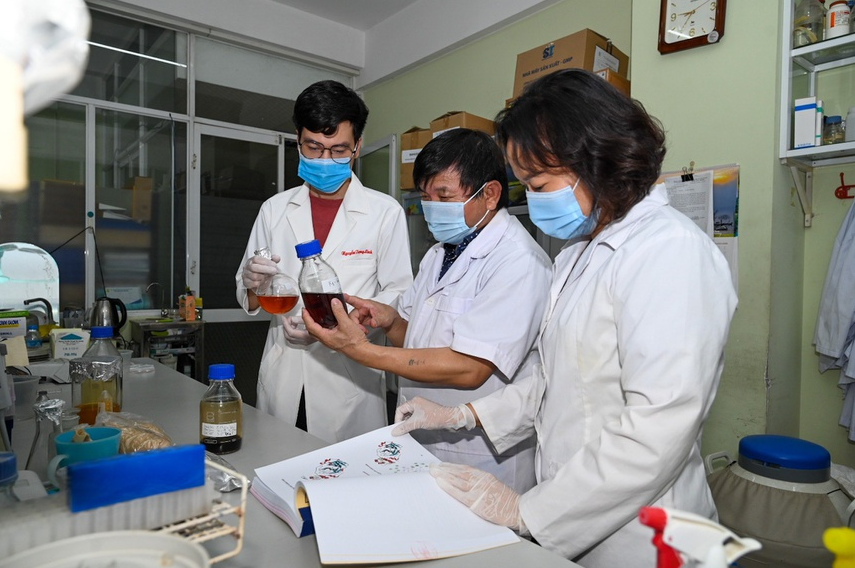It's not just the elderly who may have higher COVID-19 mortality risk
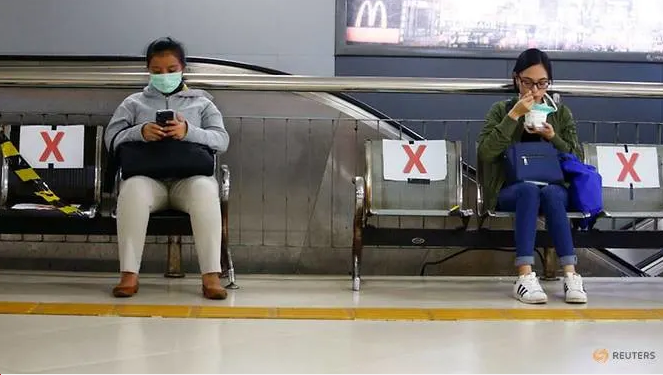 |
| Passengers sit on a social distancing chairs at a station to prevent the spread of coronavirus disease (COVID-19) in Jakarta, Indonesia, March 30, 2020. REUTERS/Ajeng Dinar Ulfiana |
Researchers from Britain analysed more than 3,600 confirmed COVID-19 cases as well as data from hundreds of passengers repatriated from the outbreak city of Wuhan.
They found that age was a key determining factor in serious infections, with nearly one in five over-80s requiring hospitalisation, compared to around 1 per cent among people under 30.
Taking into account estimates of the number of cases that may not have been clinically confirmed - that is, mild or asymptomatic infections - the data showed the hospitalisation rate of patients in their fifties was 8.2 per cent.
The study, published in The Lancet Infectious Diseases journal, estimated that the mortality rate from confirmed COVID-19 cases in mainland China was 1.38 per cent.
If unconfirmed cases were taken into account, the death rate dropped to 0.66 per cent.
The authors of the research said that while this was significantly lower than previous estimates, COVID-19 is still several times deadlier than previous pandemic viruses, such as H1N1.
"Our estimates can be applied to any country to inform decisions around the best containment policies for COVID-19," said Azra Ghani, a study co-author from Imperial College London.
"There might be outlying cases that get a lot of media attention, but our analysis very clearly shows that at aged 50 and over, hospitalisation is much more likely than in those under 50, and a greater proportion of cases are likely to be fatal."
Billions of people have been confined to their homes around the world as governments desperately try to stop the spread of the novel coronavirus.
As of 1900 GMT Monday the virus had killed 36,374 people out of 757,940 cases globally.
That would mean 4.8 per cent of all confirmed COVID-19 infections have proven deadly.
But experts stress that without widespread testing it is impossible to know how many people may have become infected and recovered.
This means the true mortality rate is likely much lower, in line with The Lancet study and previous research from China.
The Lancet study showed that 18.4 per cent of patients in their 80s were hospitalised in China.
This compared to 4.3 per cent for 40 to 49-year-olds and roughly 1 per cent for people in their 20s.
According to their modelling, the authors estimate that 50-80 per cent of the global population could contract COVID-19 - but that came with several caveats, as modelling can't account for behavioural changes such as hand washing and social distancing.
Devi Sridhar, professor and chair of Global Public Health, at the University of Edinburgh's Medical School, said that the assumption that most people would become infected was leading governments, including in Britain, to abandon measures that could help slow the pandemic.
She tweeted on Tuesday that the models "resulted in the UK giving up on containment too early & assuming everyone will get it.
"Planning & preparing for unprecedented testing & using big data/apps for tracing were taken off the table. In my view, we went down the wrong path," she said.
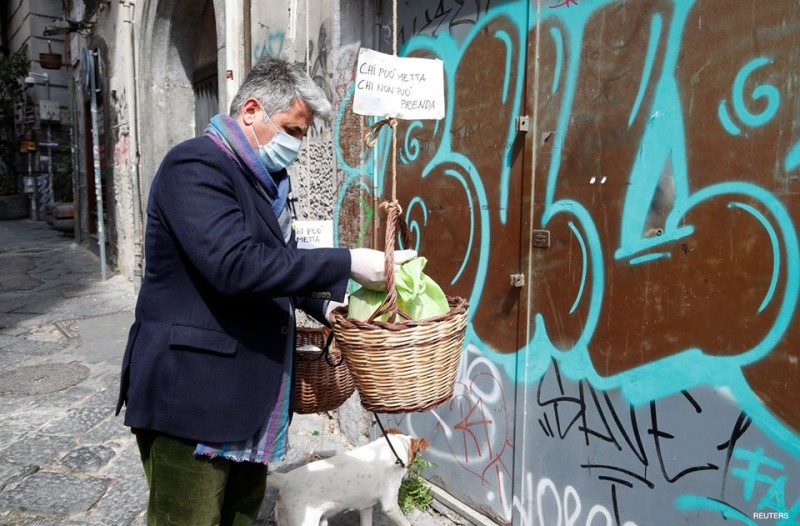 |
| People take food from baskets that are hung around Naples by people who have donated food as Italy struggles to contain the spread of coronavirus, Monday, March 30. The sign on the basket reads: "Who can put in, who can't take." Photo: Reuters/VOA |
A 12-year-old girl infected with COVID-19 has died in Belgium, health officials said on Tuesday (Mar 31).
The girl had had a fever for three days before her death and tested positive for COVID-19, said another spokesman, Steven Van Gucht.
No other details were given about her case, including whether she had any other underlying health problems.
It was the first death of a child in the coronavirus crisis in Belgium, which has now recorded a total of 705 deaths from the disease it causes, according to the latest official toll.
Last week, France reported the death of a 16-year-old girl from COVID-19 in the greater Paris region.
Although serious COVID-19 infections are uncommon among the young, some exceptional cases have been taken to hospital intensive-care wards, as US health authorities have pointed out.
The Illinois health department in the United States has announced the first known infant death from COVID-19 in the state on March 28, marking an extremely rare case of juvenile death in the global pandemic.
In the US state of California last week, the Los Angeles County Department of Public Health said that a teenager had tested positive for COVID-19 and died.
Among children, recorded illness caused by the coronavirus has been rare. The risk is statistically greater for older adults and people with other health problems. In most cases the virus causes mild or moderate symptoms, which can include fever and cough, but also milder cases of pneumonia sometimes requiring hospitalisation.
Children have made up a small fraction of recorded coronavirus cases worldwide. A letter published in the New England Journal of Medicine by Chinese researchers reported the death of a 10-month-old with COVID-19. The infant had a bowel blockage and organ failure, and died four weeks after being hospitalised.
Separate research published in the journal Pediatrics traced 2,100 infected children in China and noted one death, a 14-year-old. The study found less than 6 per cent of children infected had fallen seriously ill.
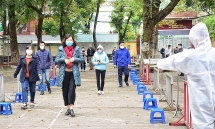 | Hanoi first rapid mass testing for Covid-19 implementation started Vnexpress reported that hundreds of people who had recently visited the Bach Mai Hospital, a major Covid-19 outbreak area in Hanoi, were tested for the virus on Tuesday. ... |
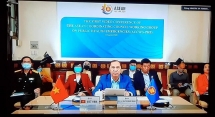 | Mobilising overall strength of ASEAN Community to curbing spread of COVID-19 Participants share information about the situation in ASEAN member states as well as the implementation of measures in each country since the outbreak of the COVID-19 ... |
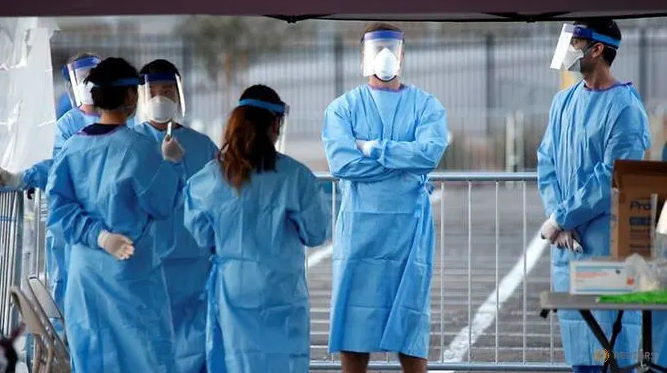 | Restrictions are slowing coronavirus infections in the US: Data The new data offers evidence, in real time, that tight social-distancing restrictions may be working, potentially reducing hospital overcrowding and lowering death rates in the ... |
Recommended
 Handbook
Handbook
Vietnam Moves Up 8 Places In World Happiness Index
 Handbook
Handbook
Travelling Vietnam Through French Artist's Children Book
 Multimedia
Multimedia
Vietnamese Turmeric Fish among Best Asian Dishes: TasteAtlas
 Handbook
Handbook
From Lost to Found: German Tourist Thanks Vietnamese Police for Returning His Bag
 Handbook
Handbook
Prediction and Resolution for the Disasters of Humanity
 Handbook
Handbook
16 French Films To Be Shown For Free During Tet Holiday In Vietnam
 Handbook
Handbook
Unique Cultural and Religious Activities to Welcome Year of the Snake
 Handbook
Handbook

